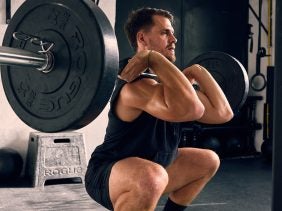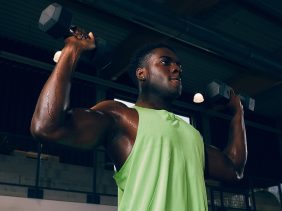Home Workouts versus Gym Workouts – what are the advantages of each?
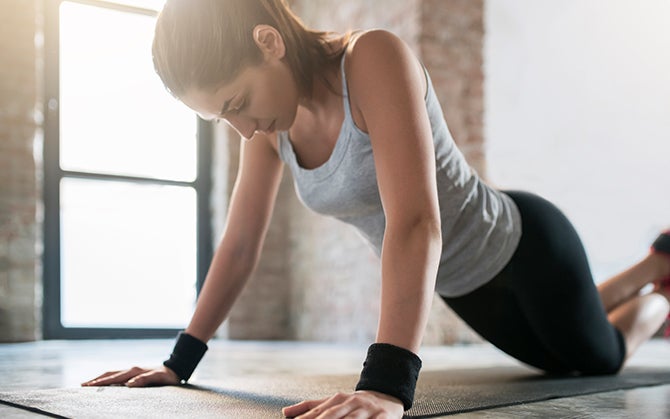 ©SrdjanPav
©SrdjanPav
You don’t have the time, the desire, nor the budget to exercise at the gym? No problem: home workouts can be just as effective and varied. We’ll show you what you need for your home workout. Plus: The best exercises and training plans.
Home Workout vs. Gym: advantages and disadvantages
Workout at home or at the gym – a question many people ask themselves at the beginning of their fitness journey. What are the arguments for and against it? A quick fact check:
Why a gym workout?
Almost everyone is or has been a member of a gym. The membership fee can be a hurdle, but the costs can be a good incentive to work out. At the gym, there is usually a wide range of equipment and courses to choose from. From cardio training and weight training to yoga and boxing, you name it, anything is possible. Lack of variety is no excuse for not using that membership.
In addition, there is the enormous variety of equipment such as dumbbells, kettlebells, weight machines, and more – a convincing argument for the gym, especially for strength athletes. You can meet like-minded people who can help give an extra push, and trainers can also give you helpful tips and track your progress.
Why a home workout?

There are also many arguments in favor of home workouts: You have one-time purchase costs for your basic equipment, but you are not bound by any contract. There is no monthly fee, which can be a real financial advantage in the long run.
Tip: Have you already found our foodspring workouts? Whether you want to lose weight, stay in shape, or bulk up muscles – you will find a lot of free workout plans and instructional videos.
If you exercise at home, you’re also much more flexible and don’t have to worry about opening hours. Even the weather or traffic won’t get in your way. Neither do other members who might hog the weights during peak hours.
You can set up your workout equipment just the way you like it – the huge selection in the gym can be overwhelming. Plus: You alone use and maintain it, so you don’t have to worry about cleanliness and spreading germs. Although you may not have the chance to interact with other athletes, the constant comparison at the gym can be intimidating. With a home workout you can concentrate completely on yourself and your personal performance. On the other hand, there are no coaches who can point out bad form or give you helpful tips.
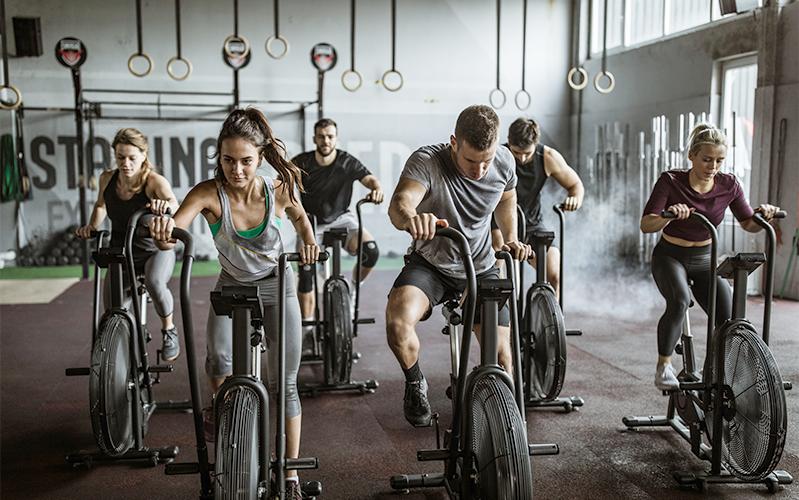
As you can see, there are advantages and disadvantages for both forms of training. In the following table, we have summarized the most important factors for you to decide for yourself. What you ultimately choose depends entirely on your needs and options. Of course you can also mix it up with both training at the gym and at home.
| At home | At the gym | |
| Flexibility | *****
High, totally unaffected by external factors | **
Dependent on opening hours, the weather, traffic, and peak hours |
| Costs | ****
One-time purchases | *
Registration fee, monthly fee, possibly other costs |
| Equipment | **
Limited, depending on your needs and the space available | *****
Generally large selection of machines and weights |
| Variety | ***
Wide range of apps, online exercise programs and YouTube tutorials | ****
Depends on the gym, but usually a wide range of courses and equipment |
| Motivation | **
Completely independent training, no pressure from others | ****
Contact with like-minded people can push and motivate, but can also put too much pressure on you |
| Risk of injury | **
Relatively high, as no trainer can correct your form and execution, but there is less complex equipment | ****
The more complex the equipment, the greater the risk of injury, but you are usually under the supervision of qualified trainers |
***** Excellent
**** Very good
*** Good
** Okay
* Poor
Equipment for your home workout
If you decide to work on your fitness from your house, you’ll need some basics – even if you’re only using your body weight.

Here’s some equipment that will make your home workouts easier and more fun. Plus: What’s recommended for endurance training and muscle building as well as for yoga and pilates.
Basic Equipment
What you definitely need and probably already have at home:
- Fitness mat
- Towel (instead of resistance band)
- Water bottles (instead of dumbbells)
- Chair (instead of weight bench)
For our free workouts you need nothing more than a mat – you can start right away!
Additional equipment
The equipment that provides more variety includes:
- Dumbbells (e.g. a dumbbell set consisting of bar and discs)
- Resistance bands, long and short
- Jump rope
- Pull-up bar
Equipment for cardio training
For endurance fans, it could be worth your while to get some kind of exercise machine, such as:
- Treadmill
- Crosstrainer (elliptical)
- Rowing machine (ergometer)
- Bike ergometer
Strength training equipment
For anyone who is fully committed to weight training and is willing to invest a little money:
- Kettlebell
- Barbell set
- Weight bench
- TRX
- Medicine ball or slam ball
- Sandbag or Bulgarian Bag
- Power station (Power rack) with cable pulls and weights
Equipment for Yoga and Pilates
- Yoga block
- Yoga belt
- Gymnastics ball
- Pilates circle
- Theraband (resistance band)
- Balance pad
Bodyweight training vs. equipment training
Do I need equipment for a home workout at all? Whether you train at home with only your own bodyweight or with additional weights depends on your goals and requirements.
Here’s a comparison guide:
| Bodyweight Training | Training with Equipment | |
| Fitness Goal | Fat burning, muscle definition, increased coordination, and mobility | Muscle building, fat burning, increase in strength endurance |
| Flexibility | High | Limited options |
| Risk of Injury | Low | Mid to high |
| Time | Low | Mid to high |
| Equipment | None, therefore cost-effective | Necessary, investments necessary |
Home Workouts: Frequency, regeneration, and nutrition
Frequency
It has been scientifically proven that two to three sessions of full body training per week of 45 to 60 minutes each is the optimal workload.
If you want to train more often than four times a week, however, a split plan is better advised – be it at the gym or at home. That means that you should train two to three muscle groups per session in isolation and alternate between the upper and lower body, for example.
Regeneration

Always make sure you give your body enough time to recover after particularly long or intensive workouts. As a rule of thumb, take a 48-hour break between two training sessions of the same muscle group.
Of course, you can also be active during your recovery periods – for example with low intensity workouts, easy running or walking, yoga, mobility training, or fascia training.
Tip: You can support your recovery by taking in essential amino acids. For example, try our Recovery Aminos after every workout. It will recharge your muscles and get you fit for your next workout.
Nutrition
Besides the pillars of training and recovery, a healthy, balanced diet is the foundation for your success. Your body needs sufficient energy every day: carbohydrates and fats help you to perform at your best in all areas of life.
Protein is just as important so that your muscles can recover and grow after the workout. If you don’t have much time and still want to supply your body with energy and protein quickly, a protein shake is the right choice.
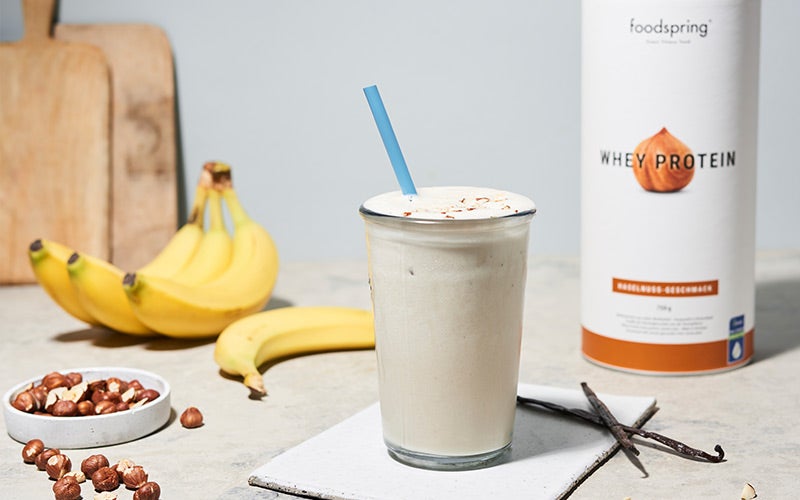
check out our whey protein now
The best at-home workout exercises
Whether your goal is to build muscle or increase your endurance, here are some of the best exercises for your at-home workout. With a few exceptions, you can do them all without any equipment. Of course, you always have the option to intensify them by adding dumbbells or resistance bands.
Full-body cardio
- High Knees
- Jumping Jacks (dumbbells optional)
- Squat Jumps (resistance band optional)
- Mountain Climbers
- Skaters (resistance band optional)
- Jumping Lunges
- Burpees
Lower-body
- Squats (resistance band and/or dumbbells optional)
- Static Lunges (dumbbells optional)
- Walking Lunges (dumbbells optional)
- Curtsy Lunges (dumbbells optional)
- Bulgarian Split Squat (dumbbells optional)
- Glute Bridges (resistance band and/or dumbbells optional)
- Calf Raises (dumbbells optional)
Upper-body
- Tricep Dips
- Push Ups
- Hyperextension
- Plank with Shoulder Taps
- Superman Plank
- Rowing with a towel, resistance band or dumbbells
- Chest Presses with dumbbells
- Butterfly Reverse with dumbbells
- Shoulder Presses with dumbbells
Abdominal
- Sit-Ups
- Crunches
- Bicycle Crunch
- Reverse Crunch
- Leg Raise
- Flutter Kicks
- Russian Twist
- Side Plank Hip Lift
- Reverse Plank with Leg Raises
4 weeks training plan for your at at-home workouts
Ready to get started? We’ve put together an intensive 4-week training plan for you. All you need is a mat, the willingness to work up a sweat, and an extra dose of motivation.
You’ll train five days a week. On four of these days, you’ll give it your all with our workouts, while day 5 is dedicated to active recovery – for example with yoga, mobility training, or a relaxed run. The other two days are well-deserved rest days.
Ready? Let’s go!
| Week 1 | Week 2 | Week 3 | Week 4 | |
| Monday | Heavens Peak I | Pico das Torres I | Heavens Peak II | Pico das Torres II |
| Tuesday | Mount Nirvana I | Hydra I | Mount Nirvana II | Hydra II |
| Wednesday | Rest | Rest | Rest | Rest |
| Thursday | Lions Head I | Sculptor I | Lions Head II | Sculptor II |
| Friday | Yoga/Jogging/
Mobility Training | Yoga/Jogging/
Mobility Training | Yoga/Jogging/
Mobility Training | Yoga/Jogging/
Mobility Training |
| Saturday | Tornador I | Challenger Point I | Tornador II | Challenger Point II |
| Sunday | Rest | Rest | Rest | Rest |
After the four weeks are over, of course you can stick with it: Our free workout section has dozens of training plans and explanatory videos for your home gym!
get moving now with our workouts!
Summary
- An at-home workout has many advantages: You can save money, you are flexible, and you have the option to train according to your individual needs.
- The challenges of at home workouts are the lack of interaction with other athletes, the high degree of personal accountability, and the lack of supervision by a personal trainer.
- For training with bodyweight exercises you only need a fitness mat. Some examples of optional add-ons include free weights, resistance bands, pull-up bar, weight bench, jump rope, or exercise bike.
- Two to three 45 to 60-minute training sessions per week are ideal for increasing your fitness, burning fat, and building strength.
- For optimal training results, you should have sufficient recovery and follow a healthy, balanced diet with sufficient protein and carbohydrates.
Sources for this article
We at foodspring use only high-quality sources, including peer-reviewed studies, to support the facts within our articles. Read our editorial policy to learn more about how we fact-check and keep our content accurate, reliable, and trustworthy.






























